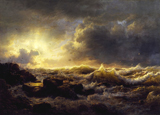Margarita and the Atocha
A shipment of wealth to Spain
After Spanish conquistadors seized control over Inca settlements in Peru, necessity for moving vast resources increased dramatically along with an inherent risk of doing so. Small, privateer commissioned fleets intended to capitalize on treasure shipments while demonstrating loyalty to the crown. Spain bolstered flota presence by sending large galleon warships to protect and defend merchant vessels. At the peak of new world expeditions, Spanish fleets reached upward of eighty to ninety ships systematically composed of two or more heavily armed treasure galleons, merchant, supply, and communication boats. Strategically positioned armada convoys offer greater protection from smaller pirate fleets and modest defense against malevolent bandits.
In 1622, an armada of twenty-eight ships strong assembled in Havana to haul a shipment of wealth to Spain from recent expeditions. Within the fleet are two heavily armed galleons, the Santa Margarita and Nuestra Senora de Atocha, designated to transport the bulk of spoils. After experiencing a few delays at port, the two galleons were then packed to the brim with copper, silver, gold, gems, and an assortment of prized handcrafted jewelry. While loading the Margarita and Atocha, crews fortified a war fleet to accompany the two laden galleons, acting a heavily armed protective cover. Merchant ships traveling with the armada also provide a type of distraction from treasure ships, and in their own right, taking advantage of the war fleet presence to safeguard trade goods such as tobacco and indigo along for the trip. Once assembled, the fleet raised anchor from Havana on a fair day with a great start toward a promising sail. Crews kept a watchful eye for pirates, suspicious activity, and foul weather that might compromise the mission.
Unbeknown to the armada, a storm system brewing just beyond the spotter's horizon would soon push the sailors to their limits. Hurricane force winds sweeping the area pushed the armada off course and into shallows just past the Dry Tortugas region. Coral reefs obscured by churning waters ripped through fleet hulls, sinking the majority. Reports indicate upwards of six-hundred people died or went missing during the fast-moving incident, and the crown suffered dearly from the loss of both lives and wealth. Spain returned to the scene shortly thereafter to salvage wrecks, only to find debris trails were scattered even further, as though a second hurricane placed the final nails. Violent winds had recklessly tossed ship debris along a fifty mile trail.

Loss of an entire flota and new world treasures distressed Spain, and it would be a long, difficult, setback to recover from. Adding to this, timing couldn't have been worse, right in the middle of European war. Spain's only choice to continue funding sieges during the Thirty-Year's Palatinate, to sell galleons they would've used otherwise for retrieving western treasures. Spanish salvaging recovered generous portions of treasure from Santa Margarita, but the Our Lady of the Atocha evaded discovery for over three-hundred and sixty years. Then in 1985, five years after recovering pieces of the Margarita, world famous undersea explorer Mel Fisher located the Atocha seventy miles off Florida's coast near the Marquesas Keys.
Despite the fact Atocha met with two hurricanes before sinking, Fisher believed he found the majority of treasure intact as it was lost hundreds of years prior. Mel uncovered a cache of Gold, silver, gems, and precious artifacts totaling well over four-hundred million on today's market. Among the valuables from the Atocha were two items prized for their beauty and rarity; an exquisite twenty-two carat emerald cross, and a mesmerizing emerald ring. With both treasure galleons discovered and picked clean, focus shifts now to the remaining fleet. Could there be additional treasure aboard those ships? Circumstances of the fleet's demise have made it challenging, even with modern technology at hand, to locate where the remaining ships are residing. We know Spain recovered a portion of the treasure off Santa Margarita, and Mel Fisher salvaged a significant portion of the Atocha riches, yet records suggest the potential of finding much more. The two galleons may have held most of the fleet's loot, however, Spain spent a considerable amount of time and funds in attempt to fully recover all that was lost.
Operations narrowed in on the Margarita for nearly ten years with side efforts on the Atocha and merchant ships until Spain was eventually forced to cut the loss. This suggests the Spanish government knew much more treasure was on-board at the time of sinking, possibly even more than what Fisher uncovered hundreds of years later. Several survivor reports from the Atocha and Margarita's last moments describe the smaller merchant vessels sinking within a visible range. Wealth aboard merchant ships may have been severely underestimated by modern researchers, well beyond the indigo and tobacco indicated in cargo manifests. One reason for the discrepancy is noted by frequent occurrences of treasure smuggling during Spain's expeditions. Precious metals and gems were hidden from the crown to avoid taxes. The 1733 fleet disaster which occurred years later is a great example of this practice, with Spain recovering excess amounts of wealth slipping past detection of authorities. Another explanation for the existence of additional treasure is in fact due to overloading. Namely, the possibility Spain could not fit all of the treasures aboard the two galleons, and may have been split it between merchant vessels. With pressure mounting on the Spanish economy for war efforts, officials may have elected to transport loot beyond ship capacities. Under either circumstance, finally locating the remaining ships will help determine this once and for all.
